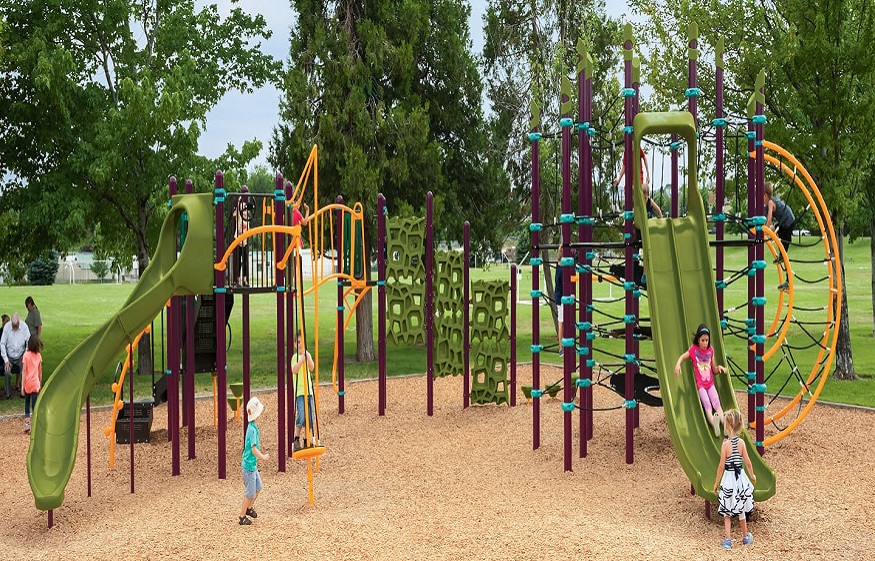How the Right School Playground Design Can Boost Physical, Social, and Emotional Development in Kids

Are you looking for ways to enhance your child’s physical, social, and emotional development? Look no further than the playground! With the right design elements in place, a playground can be much more than just a fun place to play. In this blog post, we’ll explore how thoughtful school playground design can promote healthy growth and development in children of all ages. From climbing structures that build strength and coordination to interactive games that foster teamwork and communication skills, there’s something for every child on today’s modern playgrounds. So grab your sneakers and join us as we dive into the world of innovative play spaces!
Introduction to School Playground Design and its Importance
When it comes to school playground design, there are a few key elements that are important to consider in order to create a space that is conducive to physical, social, and emotional development in kids. First, the playground should be designed with age-appropriate play in mind. This means that the equipment and activities should be appropriate for the developmental stage of the child using it. Second, the playground should be designed to encourage social interaction and cooperation. This can be achieved through features such as group play structures and cooperative games. Finally, the playground should be a safe and welcoming environment for all children. This includes ensuring that the equipment is well-maintained and that there is adequate adult supervision present.
When all of these elements are taken into consideration, it is clear why playground design is so important. A well-designed playground can provide children with the opportunity to explore new things, make friends, and develop physically, emotionally, and socially.
Physical Benefits of Proper Playground Design
When children play on a playground that has been designed with their physical development in mind, they reap a number of benefits. For one, they get the opportunity to explore their environment and develop their gross motor skills. Additionally, proper playground design encourages social interaction and cooperative play, which are important for developing social and emotional skills.
In terms of physical development, children who play on well-designed playgrounds have the chance to improve their gross motor skills. Gross motor skills involve the large muscles in the body and are responsible for movement. Playing on a playground gives children the chance to use their gross motor skills to climb, swing, slide, and run around. This type of activity helps them to develop strength, coordination, and balance.
Additionally, proper playground design encourages social interaction and cooperative play. When children interact with each other on the playground, they have the opportunity to practise communication and problem-solving skills. They also learn how to share, take turns, and work together toward a common goal. These are important social and emotional skills that will help them throughout their lives.
Social Benefits of Proper Playground Design
When children play on well-designed school playground design, they have opportunities to develop their physical, social, and emotional skills. Playgrounds that are designed with children’s development in mind can help boost these skills in kids of all ages.
Physical Development
Playground equipment that is appropriate for a child’s age and abilities can help them develop their gross motor skills. Slides, swings, monkey bars, and other climbing structures encourage children to use their large muscles as they move their bodies in new ways. This type of play also helps children develop strength, coordination, and balance.
Social Development
Playing with other children on the playground gives kids a chance to practise social skills such as communication, sharing, and teamwork. They learn how to take turns, resolve conflicts, and cooperate with others. These are important skills that will help them succeed in school and in life.
Emotional Development
Playing on the playground can also help children develop confidence and self-esteem. When they try new things and overcome challenges, they feel a sense of accomplishment. This type of play also helps kids release energy and reduce stress.
Emotional Benefits of Proper Playground Design
When children are given the opportunity to play on well-designed playgrounds, they experience a number of benefits that can improve their physical, social, and emotional development. For example, proper playground design can encourage active play, which is important for physical development. Additionally, well-designed playgrounds can provide opportunities for social interaction and collaboration, which can boost social skills. Finally, playgrounds that are stimulating and challenging can help children develop emotionally by providing a safe space to explore new things.
Tips for Creating the Right Playground Design
When it comes to playground design, there are a few key things to keep in mind in order to create a space that will boost physical, social, and emotional development in kids. Here are some tips to help you get started:
1. Think about the different types of activities that children like to do. Do they like to swing, slide, climb, or run around? Make sure your playground design includes a variety of activities to accommodate all interests.
2. Incorporate natural elements into the design whenever possible. Kids love to explore and play in nature, so incorporating features like trees, bushes, and rocks can make the playground even more appealing.
3. Keep safety in mind at all times. All playground equipment should be properly installed and maintained to ensure a safe environment for children.
4. Encourage social interaction by including features that promote cooperation and communication among kids. For example, you could include a sandpit or water table where children can work together while they play.
5. Create an inviting space that is welcoming to all children. Be sure to use bright colours and interesting textures and patterns to make the playground visually appealing.
By following these tips, you can create a playground design that will support physical, social, and emotional development in kids!
How to Incorporate Nature into the Playground Area
When it comes to designing a playground that will encourage kids to be active and engaged, incorporating nature is always a good idea. Here are some tips on how to do it:
1. Use natural materials as much as possible. This can include things like wood chips or mulch for the ground surface, logs or boulders for climbing, and so on.
2. Plant trees and other greenery around the perimeter of the playground. This will create a nice border and also provide some shade on hot days.
3. Incorporate water features into the design. A small stream or waterfall can add a lot of interest and excitement to the playground area.
4. Make sure there is plenty of open space for running and playing games. Kids need room to move, and adding too much furniture or equipment can cramp their style.
By following these tips, you can create a playground that is both fun and inviting for kids of all ages
Conclusion
The right playground design can have a profoundly positive effect on children’s physical, social, and emotional development. It offers opportunities for active play that help to build strength and coordination as well as providing an area where kids can interact with each other in a safe environment. It is important to ensure that the playground you choose allows your child to explore their surroundings while also protecting them from any potential hazards they may encounter. By doing this, you are giving them the best chance of developing into healthy, confident adults.





